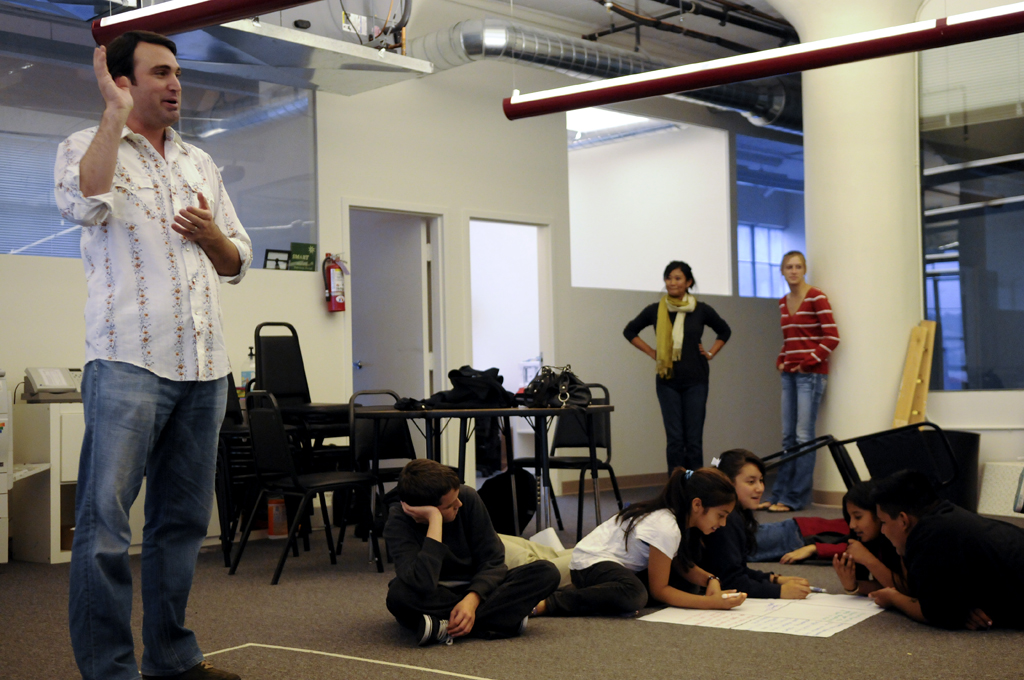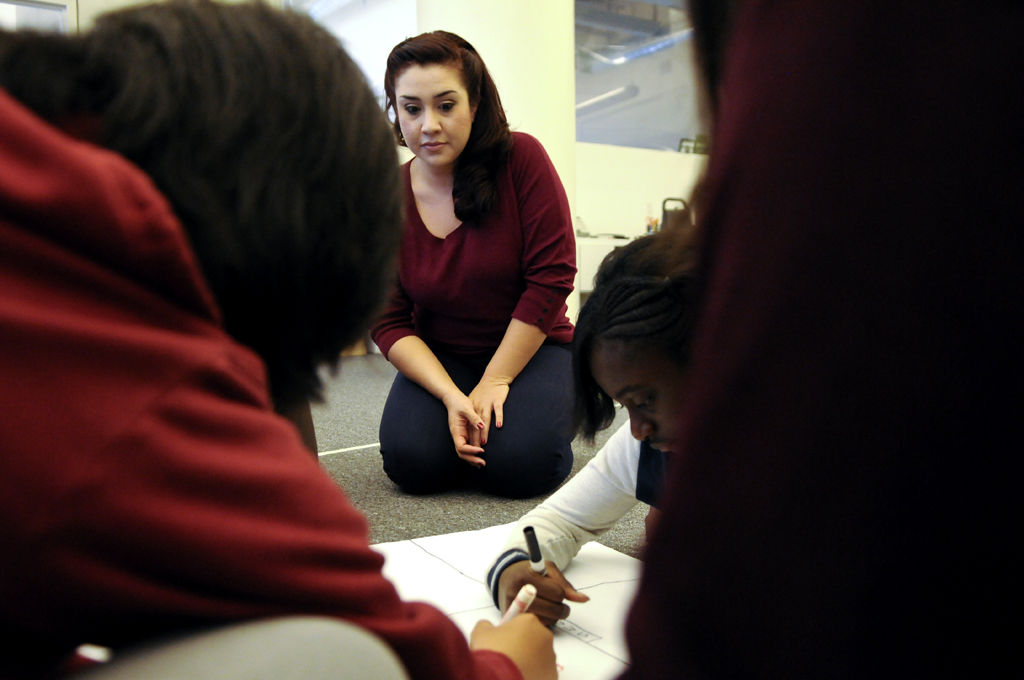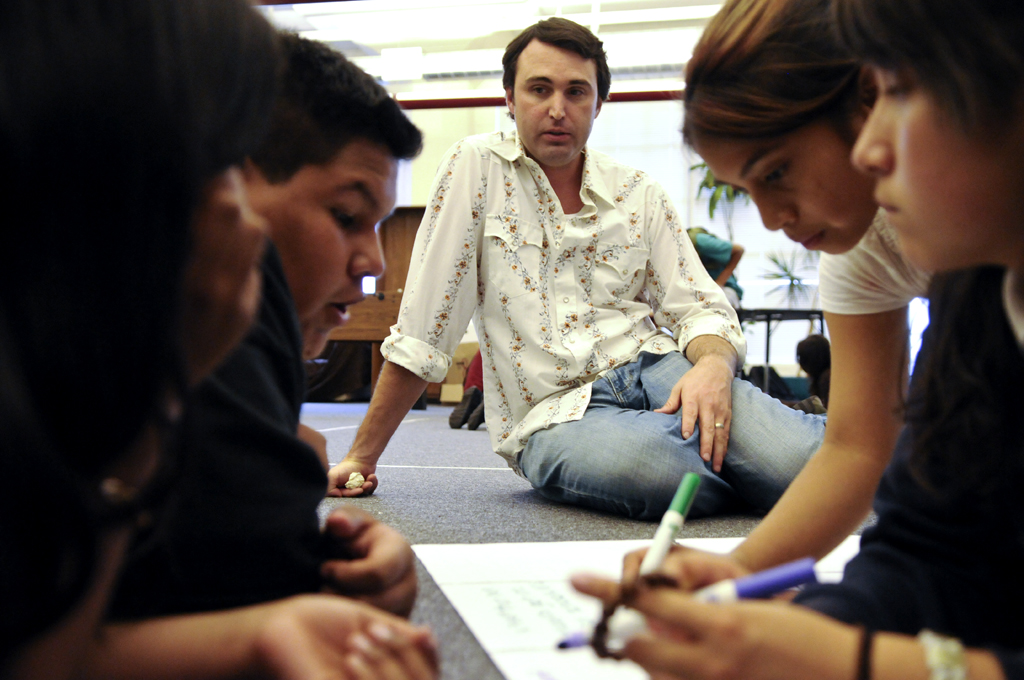She sits cross-legged, runs her hands through her black hair and smiles between each sentence, describing a scene into a life that is now just a memory. Her parents had a hard time trying to fund her educational endeavors. By the time college rolled around, she was on her own. Yet, now as she leans in to her desk of the SMART program’s new location, she recalls the track she’s on from new career opportunities that arose finding her way through the educational system. For Nonoko Sato, the matter of trying to help local kids with the same motivation she had more than eight years ago is personal.
Students who come from various backgrounds and have tried their luck in public school, sometimes find that the end result is ineffective. A chance for higher education or even just graduating from high school can seem so distant through little or no fault of their own. That extra push to keep up the educational endurance comes from the dedication of directors and mentors of various programs who seek to make their pupils excel.
Help is wherever someone is willing to look for it. “We assist students who want to learn, but their family income and status keeps them from continuing after high school,” says Sato, executive director for Schools, Mentoring and Resource Team (SMART). “Our goal is for them to understand where education will take them if they really want it and that we are there helping them until they’re ready for college.”

In common terms, these students would be labeled as “at-risk youth,” but that term means so much more than just an unsuccessful tenure in public school. Different programs target different circumstances, like household income, juvenile detention, foster children, and poor academic performance, among others.
At San Francisco Court Appointed Special Advocates (SFCASA), the main goal is to help children in foster care by mentoring one-on-one to help them with life’s endeavors and a better future that would otherwise be difficult beyond their control.
“We provide mentoring and advocacy for youth in foster care on a one-on-one basis,” says Sally Coates, executive director of SFCASA. “Think of Big Brothers Big Sisters, and we mentor in a similar fashion, but beyond that, we have the legal authority to advocate for the youth in the court room based on the best interests for the youth.”
When they end with their students at the age of eighteen, those who carry on can be referred to the Guardian Scholars, an educational opportunity program at SF State. Their aim remains the same in creating a system of support that covers the students academic, social, and even financial needs. A report shows how desperately these young people need the system, since only one percent of former foster care youth go on to pursue a college education, and even then, only eleven percent of the same youth will obtain a bachelor’s degree.

In a similar sense, Nick Wightman, regional director of a program at YMCA San Francisco, overlooks and assists in helping students with their primary struggles.
“We definitely work to help kids get more engaged in school and see themselves as successful so they can graduate high school, go to college or whatever it is they aspire to do,” says Wightman. “With at-risk youth, there are many factors in play that have to be addressed along the way.”
Also working one-on-one, Wightman describes the objective of the YMCA program as helping the at-risk youth academically and with social skills by partnering them up with a mentor. While not necessarily academically focused, the mentors and the program make efforts to help these students cope with their status at their normal schools, where most of them are brought by referral from counselors and agencies.
Perhaps the efforts speak for themselves when describing the dedication that each program’s volunteers offer for these kids. And not all have to necessarily address the academic front. While some programs might be more successful in achieving results than others, it is crucial to understand that there has to be a consensus between what the child wants or needs, and what the mentor can provide.

At least for Kaina Walker, this is the approach that she overlooks as the programs director for Youth Justice Institute, a program dedicated to transition their youths into positive members of the community when life circumstances prove too difficult.
“These are mostly students ages fifteen and sixteen, who are high-risk,” says Walker. “Many of them are either in juvenile detention or on probation, so they need lots of support.” Walker explains that the goal for mentors, most of them being college students (many from SFSU), is to provide company and address the needs accordingly for the purpose of mental health. This approach makes their kids obtain a feeling of empowerment, for the betterment of the community.
Walker claims that success is not measured by tracing the magnitude of the student, but by embedding in them that they can give something back. The importance is in planting that seed, and that the effect is unpredictable. Whether ready and immediate or sometime later, that is where success can be attributed.
Yet, to draw from inspirations that follow strenuous experiences also makes it crucial to “nip it in the bud,” meaning that students can be prevented from having to confront any rigors relevant to their education by themselves entirely. In one such example, Ben Buis comprehends the significance to be the first in the family to attain the goals that their preceding generations came short of, and therefore makes the mission of the program a part of his personal effort.
“I struggled through college,” says Buis. “There was no influence to help me through it, both financially and academically, so my need to teach and serve the program is to help the students in these types of situations.”

Where as Sato overlooks and handles partnerships with schools, other educational organizations, and families associated with SMART, Buis contributes his part by ensuring that the mentoring and the program fulfills and educates the students based on their needs. “I’ve always tried to assist students directly in what they need,” says Buis. “While we try to support them academically, it also counts to support them socially and emotionally.”
It would be inaccurate to try and pinpoint that academic opportunities have greatly risen for many more students, diminishing the crowd that is have not obtained a high school diploma. The U.S. Department of Education (through the National Center for Education Statistics) charts that from 2000 to 2008, the average freshman graduation rate for public high school students has remained at an average of about seventy-three and a half percent. That’s almost three out of four students, a figure that is similar to the proportion in California.
A middle ground has to exist between the student and those interacting with the student. Where family and teachers have come up empty-handed, mentors are there to trace the source when all else has fallen short.
“Mentors are aware that this can be a scary world for these youths,“ says Walker. “While they are motivated and push college mentally, they understand that these kids need to be kept company for mental health.” Walker notes that within the program, it is essential for mentors to respect the needs of the youth.

“In this way, mentors are also learning from the kids,” he says. Metaphorically, biology would liken this sort of rapport as a form of symbiotic relationship of mutualism.
“Many of our [SFSU mentor] students have been able to move forward in their careers,” Walker says of the program mentors over the years. “Many are now probation officers, police officers, lawyers, Juvenile Hall counselors, community service providers, moved on to get their masters, etc.”
Most of their jobs entail working with youth and helping them in many different roles. So despite the dismal job market, now it is more important for mentors to get first hand experience to compete with others. Education does not appear to be enough, according to Walker’s observations.
“Academics have been faulty, but these are students who want to learn,” says Sato, “The idea is to let them venture, [something] parents can sometimes have a hard time understanding.” She explains that each program has a role to play, to make their students reach a full potential.
Granted, not many programs can become readily available to the needs of any struggling student, but staff members work to minimize in taking no for an answer. Not to mention that any effectiveness can only come from the dedication of a staff. Denying the “no” comes from several fronts; from the governments and bureaucracies that cut the funding, from teachers and faculties who have given up, and from parents who do not believe in the causes and probabilities of higher education.
Nevertheless, bearing in mind any instances of program success, maybe they can collectively influence the attention of the general public. In a positive manner, it can raise the hope that more doors can be opened for under-privileged and at-risk youths, bringing down that percentage and giving a national dilemma a path towards resolution, starting in San Francisco.


Irma • Apr 22, 2013 at 10:58 pm
I like this post, enjoyed this one appreciate it for posting. “No trumpets sound when the important decisions of our life are made. Destiny is made known silently.” by Agnes de Mille.